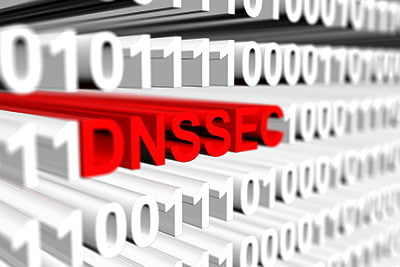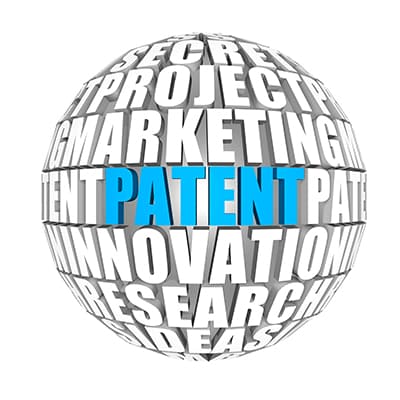Domain Name Protection in UAE
 Nowadays, all kinds of information can be found on the internet. As a result, Governments, companies, organizations and individuals use websites to provide information online. These websites are domain names used in URLs, for example in the URL https://www.stalawfirm.com/en.html; the domain name is stalalawfirm.com. A domain in simple language is a field of thought, interest, or activity, over which someone has control, rights or influence.
Nowadays, all kinds of information can be found on the internet. As a result, Governments, companies, organizations and individuals use websites to provide information online. These websites are domain names used in URLs, for example in the URL https://www.stalawfirm.com/en.html; the domain name is stalalawfirm.com. A domain in simple language is a field of thought, interest, or activity, over which someone has control, rights or influence.
On the internet, a domain is a set of addresses that shows the category or geographical area to which an internet address belongs to. In short, domain names are used to represent particular IP addresses. Since the internet consists of IP addresses and not domain names, a Domain Name System Server is used by every Web Server to translate the domain names into IP addresses.
Top Level Domains (“TLDs”) are depicted as the suffix in a domain name and identifies something about the domain name such as the purpose, the organization to which it belongs to or the geographical area of its origin. They are a limited number of Top-Level Domains.
|
Suffix |
Organization/Purpose |
|
.org |
Organizations (non-profit) |
|
.gov |
Governmental Agencies |
|
.mil |
Military |
|
.com |
Commercial Business |
|
.net |
Network Organizations |
|
.edu |
Educational Institutions |
|
Country Specific TLDs |
|
|
Suffix |
Country |
|
.in |
India |
|
.ae |
UAE |
|
.ca |
Canada |
|
.th |
Thailand |
- Need for Domain Name Protection
Principles similar to trademark infringement apply to domain name protection. Third parties, which are unrelated to the website owner, could create and register a domain name which is identical or like either the domain name or trademark of another party. These activities are commonly called as “cyber-squatting”.
Along with cyber-squatting, websites also run the risk of phishing, where fake websites are created like legitimate websites and are used to deceive customers into disclosing personal data. These fake websites often incorporate the trademarks belonging to the right website as well as the information provided in these websites, making the fake website appear genuine and confusingly like the legitimate one.
- Domain Name in UAE and its Protection
 With the rapid growth of E-commerce in UAE and the other GCC countries, legislation has been put into place to ensure its protection. In the UAE, Internet Domain names fall under the authority of the ae Domain Administration with the Telecommunications Regulatory Authority. Enabled in 2007, ae Domain Administration:
With the rapid growth of E-commerce in UAE and the other GCC countries, legislation has been put into place to ensure its protection. In the UAE, Internet Domain names fall under the authority of the ae Domain Administration with the Telecommunications Regulatory Authority. Enabled in 2007, ae Domain Administration:
- Acts as the Registry Operator
- Establishes and enforces policies for the regulation of the ae Domain
- Facilitates dispute settlement about the domain names
Brief History
The ae Domain was initially under the UUNET and was later re-delegated to Etisalat in 1995 following a brief period of administration by the United Arab Emirates University. However, in 2006, the administration was transferred to the Telecommunications Regulatory Authority.
Domain name registration in Dubai is permitted at the second or third level based on specific category labels. At present, only Dubai companies can use the.co.ae domain name for their websites.
- Domain Name Licensing
It is important to note that there are no proprietary rights about domain names in the UAE. Companies in Dubai and other emirates, to use the .ae domain name, are required to obtain a domain name license. Since companies cannot own a name, they are required to apply for a special permit which is granted based on certain conditions and for a specific period. The terms and conditions of the license are contained in several documents such as the domain name registration application, domain name license, applicant’s agreement to use the .ae domain, and the policy by the ae administration. Additionally, companies in Dubai applying for a domain name reservation should also fulfil certain criteria of eligibility.
Domain Name Licensing Zones
There are two zones about the licensing requirements:
Unrestricted Zone:
Residing in an unrestricted zone, Unrestricted Domain Names may be registered by any Applicant and may be available through all Accredited Registrars.
Restricted Zone:
Located in the RESTRICTED Zone, the domain must meet the following eligibility criteria described in S11 to 16 of the Domain Name Policy.
Eligibility Criteria
The registrant must meet the following criteria, depending upon the suffix chosen, for registering Domain Names under 3LDS:
- Commercial Entities/ Information Technology Service Providers
For registering 3LDs ending with Suffix “. co.ae” and “.net.ae,” the Registrant must either possess a valid UAE trade license, be a commercial entity licensed within the UAE free-zones, or an applicant or registered holder of a trademark in the UAE.
- Not for Profit Organizations/ Schools and Academic Organizations
3LDs with the Suffix “org.ae”, “sch.ae” and “ac.ae”:
The Organization must ensure that the Administrative Contact is an employee or officer of the requesting organization and shall certify through the acceptance of the Registrant Agreement, that they have delegated authority to Register a Domain Name on behalf of that organization; and
provide a copy of their Certificate of Registration or a letter to this effect from the competent authorities of the UAE (Ministry of Education in the case of “sch.ae” and Ministry of Higher Education and Scientific Research for “ac.ae”)
Domain Names
For registering the Domain Names ending with (.co.ae), (.net.ae), (org.ae), (sch.ae) and (ac.ae) as suffixes the Domain Name applied must be an exact match, acronym, abbreviation or closely connected to name, trading name or trademark of a company, organization or association to which the Registrant belongs to or controls.
- Government Departments and Ministries of the UAE
3LDs with the Suffix “gov.ae”:
A registrant must be a Government Entity in the UAE.
The domain name can only be used for the official business of the organization.
The Applicant must state in the application the purpose of the website associated with the specific Domain Name in respect of which the Domain Name License is sought. The Domain Name must be used specifically and exclusively for this purpose during the validity of the License period.
The Administrative Contact must be an employee and shall certify through the execution of the Registrant Agreement that they have delegated to Register a Domain Name on behalf of the Registrant. The Applicants will also provide a Letter of Authorization from the relevant Minister or officer, authorizing such registration.
- Military Authorities
3LDs with the Suffix “mil.ae”:
The Applicant must be an organisation established in the UAE under the relevant laws and legislation as a military organization.
Must be used only for the official business of the organisation, and specifically and exclusively for the stated purpose for the duration of the Domain Name License Period.
The Administrative Contact must be an employee and shall certify through the execution of the Registrant Agreement that they have delegated to Register a Domain Name on behalf of the Registrant. The Applicants will also provide a Letter of Authorization from the relevant Minister or officer, authorizing such registration.
- Settlement of Disputes
The United Arab Emirates Network Information Center (UAEnic) is a registrar for registering Domain Names under .ae (Top Level Domain). It is also LIR (the Local Internet Registry) that assigns IP addresses to the Local Internet Community.
The UAE Domain Name Dispute Resolution Policy and related Rules provides for the grounds and mechanism of resolving disputes that arise relating to domain names.
Grounds
Any person or entity may initiate administrative proceedings against the Registrant of a Domain Name on the following properties:
- The Domain Name is identical or confusingly similar to a trademark or service mark in which the Complainant has rights; or
- Th respondent (that is the Registrant) should be considered as having no rights or legitimate interests in respect of the Domain Name in question; or
- Domain Name(s) should be deemed to have been Registered or being used in bad faith.
The complaint can relate to more than one Domain registered under the same Registrar.
- Dispute Resolution Mechanism
Complaint- The complaint and all annexes are to be submitted in the electronic form with the concluding statement and other statements, requests, and specifications as provided in the rules.
Administrative Compliance- On the receipt of the complaint, the Provider will first check for administrative compliance and when satisfied shall send the same with the annexes electronically and a written notice with the required documents to the Respondent. Where the Provider finds a regulatory deficiency, the Complainant shall correct such deficiency within five calendar days, failing which the complaint shall be presumed to have been withdrawn. The date of commencement of proceedings shall be the day the Provider completes all his responsibilities under S. 2(a).
Response- Within 20 days from the commencement of the proceedings, the Respondent shall send his response to the complaint electronically with the same elements as the complaint along with his grounds and reasons as to why the Respondent should retain registration or use of the domain name.
Panel- The parties can elect whether to have a single or three-member panel and specify the name and details of their candidates in the complaint/response. Where the parties have not specified any candidate, the provider shall make the election himself. After the Panel has been appointed, the Provider shall notify the parties about the appointment and the date by which the Panel shall forward its decision on the complaint. The decision in case of a three-member panel shall be based on the majority.
Language- Unless otherwise agreed by the parties, the language of the proceedings shall be in English, and the panel may order the translation of any documentary evidence in other languages to be translated wholly or partly into the language of the proceedings.
Settlement/Termination – The Panel shall terminate the proceedings where the parties before the conclusion of the proceedings come to a settlement or the Panel feels that the procedures have become unnecessary or impossible.
- Analysis of Cases Referred to WIPO Arbitration and Mediation Centre
CASE 1: Zalatimo Brothers for Sweets (Ahmed Zalatimo Company and partners) v. Jebril Hasan Abumarouf, Mix Zalatimo Sweets L.L.C, Case No. DAE2017-0008
Facts:
The Complainant (Zalatimo Brothers for Sweets) is a manufacturer of sweets in Jordan and has registered ZALATIMO BROTHERS FOR SWEETS as a trademark on October 8, 2000, with registration number 34331 in numerous parts of the world apart from Jordan, including UAE.
The Complainant also has had a registered domain name <zalatimo.com> since June 8, 1998.
The Respondent had registered a domain name <zalatimoh.ae>, which according to the Complainant, displayed a website logo similar to Complainant's logo to sell sweets.
The Complainant, as a result, filed a complaint with the WIPO Arbitration and Mediation Center on December 11, 2017.
- FINDINGS OF THE COURT:
According to the Court, the Complainant satisfied the conditions of S.6 (a) (i), (ii) and (iii) of the Policy due to the following reasons:
- Confusingly Similar or Identical
 The Complainant had established its ownership of the trademark Zalatimo Brothers for Sweets. Though the trademark is covered for the whole of Zalatimo Brothers for Sweets and not “zaltimo” alone, the Panel was convinced the word “zaltimo” is the key and distinguishing component of the complainant’s trademark. The mere presence of “h” added to the disputed domain, does not distinguish it from the original trademark or eliminate the confusion caused. Besides the country code Top-Level Domain ("ccTLD") ".ae" is typically ignored when assessing the confusing similarity between two disputed domains as established in prior .ae decisions. Consequently, the Panel found the disputed domain name too similar, creating confusion with the domain name of the Complainant.
The Complainant had established its ownership of the trademark Zalatimo Brothers for Sweets. Though the trademark is covered for the whole of Zalatimo Brothers for Sweets and not “zaltimo” alone, the Panel was convinced the word “zaltimo” is the key and distinguishing component of the complainant’s trademark. The mere presence of “h” added to the disputed domain, does not distinguish it from the original trademark or eliminate the confusion caused. Besides the country code Top-Level Domain ("ccTLD") ".ae" is typically ignored when assessing the confusing similarity between two disputed domains as established in prior .ae decisions. Consequently, the Panel found the disputed domain name too similar, creating confusion with the domain name of the Complainant.
- Rights or Legitimate Interest
The Complainant proved that:
- the Respondent had no legitimate interest or right in the disputed domain; and
- the Complainant hadn’t authorised the Respondent to use its trademark as part of the disputed domain name.
- Registered or being used in bad faith
Several pieces of evidence point out that the Respondent was fully aware of the Complainant and its trademark when it registered the disputed domain name and had been using the Complainant’s trademark in bad faith. The facts indicating bad faith were:
- That the trademark for Zaltimo Brothers for Sweets was a well-known trademark.
- That the Respondent was using the trademark for the same purpose, that is sweets.
- That the Respondent imitated the logo of the Complainant’s trademark, thereby trying to create confusion in the mind of customers to steal the Complainant’s clientele.
 English
English
 عربي
عربي Русский
Русский 官话
官话 português
português
 Türk
Türk 







